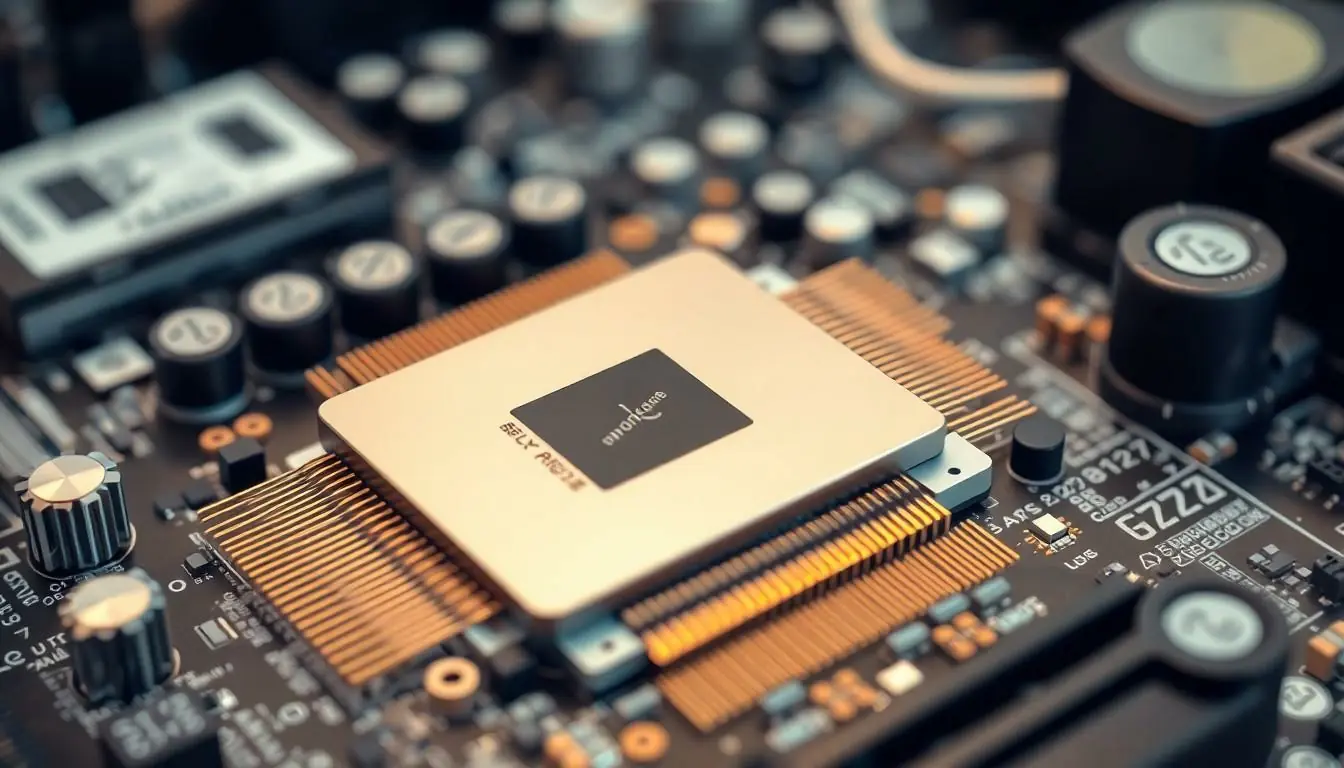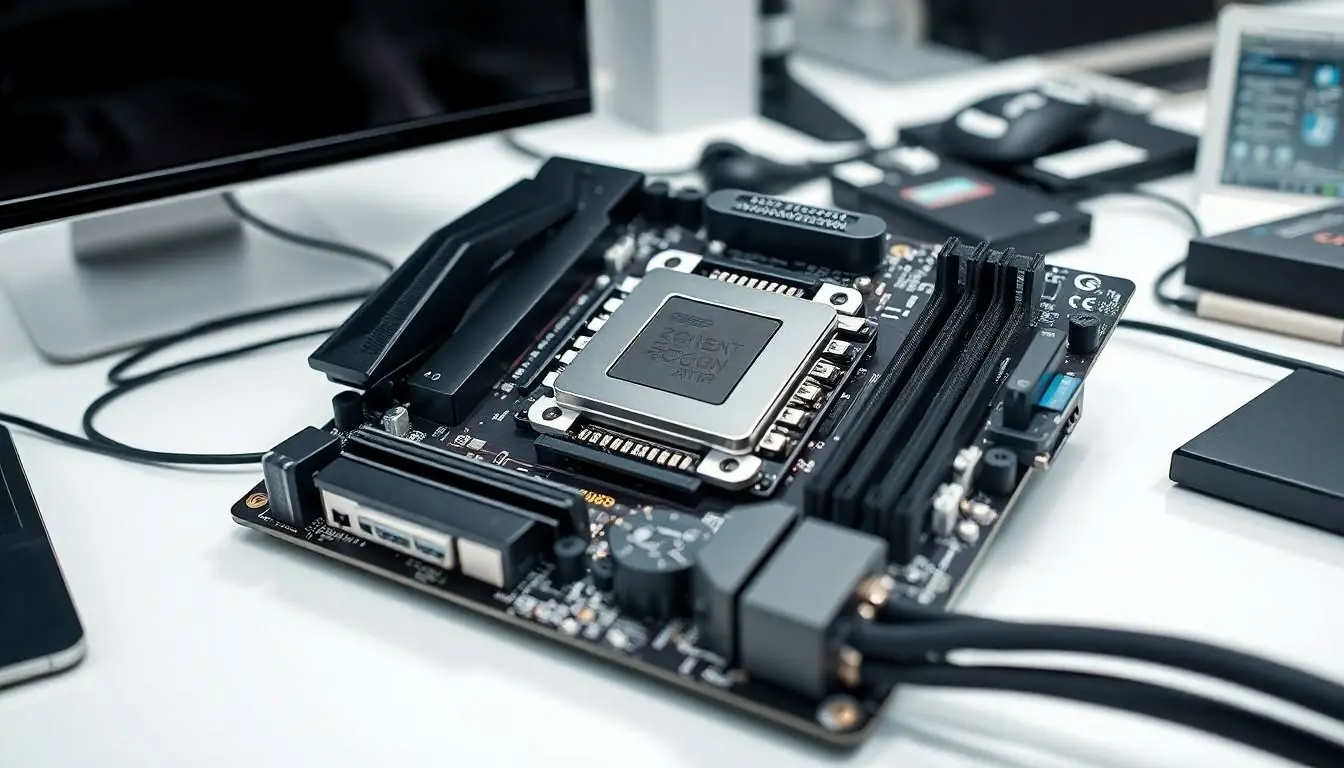Table of Contents
ToggleIn the world of computer architecture, the hardware layer is like the unsung hero of a blockbuster movie. It’s the sturdy foundation that keeps everything running smoothly while the flashy software takes center stage. Without this vital layer, your computer would be as useful as a chocolate teapot.
Overview of Computer Architecture
Computer architecture encompasses various components that work together to form a cohesive system. Core elements include the central processing unit (CPU), memory, storage, and input-output devices. Each element plays a unique role in the overall operation of a computer.
A CPU functions as the brain of the computer, executing instructions and processing data. Different architectures, such as x86 and ARM, cater to specific tasks and performance needs. Memory serves as temporary storage, providing quick access to data that the CPU needs while executing tasks. Types of memory include RAM, cache, and registers, each offering varying speeds and capacities.
Storage components retain data long-term, including hard disk drives (HDD), solid-state drives (SSD), and external storage devices. These devices ensure data persists even when the computer powers down. Input-output devices facilitate interaction between the user and the computer, including keyboards, mice, monitors, and printers. Each device serves integral functions, allowing users to input data and receive output effectively.
Interconnects like buses act as communication pathways between these components, ensuring smooth data transfer. The hardware layer relies on these interconnections to maintain efficiency and performance. The firmware, representing low-level software, acts in concert with hardware to initialize and control the system during the booting process.
By understanding the hardware layer’s various components, one appreciates its critical role in ensuring the computer operates smoothly. This foundational knowledge enhances the understanding of how software interacts with hardware, ultimately defining the computer’s overall performance.
Components of the Hardware Layer

The hardware layer consists of essential components that enable a computer to function effectively. Each component plays a distinct role in the overall architecture.
Central Processing Unit (CPU)
The CPU acts as the primary processor in a computer system. It processes instructions and performs calculations, serving as the core of computational power. Different architectures, like x86 and ARM, address specific performance requirements. High-performance CPUs include multiple cores enhancing multitasking capabilities. They interact closely with memory, ensuring efficient data handling during task execution.
Memory Hierarchy
Memory hierarchy consists of various storage types that facilitate quick data access. Random Access Memory (RAM) provides temporary storage for active processes, allowing rapid retrieval of data. Cache memory, located closer to the CPU, accelerates data access speeds for frequently used information. Registers serve as the fastest memory type, holding data for immediate processing. This layered structure ensures optimal performance by balancing speed and capacity against cost and efficiency.
Input and Output Devices
Input and output devices bridge the gap between the user and the computer. Keyboards and mice serve as primary input mechanisms, allowing users to interact with the system. Monitors and printers function as output devices, presenting information in a visually accessible format. Various other devices, such as scanners and speakers, broaden the scope of interaction. The combination of these devices facilitates seamless communication with the system, enhancing user experience.
Types of Hardware
The hardware layer consists of various types that work together to form a computer system.
Primary Storage
Primary storage includes memory types crucial for quick data access. Random Access Memory (RAM) serves as temporary storage for active processes, allowing fast read and write operations. Cache memory stores frequently accessed data to speed up processing, reducing latency for the CPU. Registers, located within the CPU, provide the fastest access to data the processor needs immediately. These components collectively enhance system performance by facilitating rapid data retrieval and manipulation.
Secondary Storage
Secondary storage retains data long-term, ensuring information persists even when power is off. Hard Disk Drives (HDD) utilize magnetic storage to hold large amounts of data at lower costs. Solid-State Drives (SSD), on the other hand, offer faster data access and improved durability, employing flash memory technology. Optical drives, like CD and DVD players, also serve as secondary storage for media files and software. Balancing cost and performance, these storage types cater to different user needs while maintaining data integrity.
Networking Components
Networking components connect computers and enable communication across networks. Network Interface Cards (NIC) facilitate wired or wireless connections, serving as the interface between the computer and the network. Routers direct data packets between networks, ensuring correct data flow. Switches connect multiple devices within a single network, creating efficient communication pathways. Firewalls protect systems from external threats, monitoring incoming and outgoing traffic to enhance security. Together, these components form the backbone of network communication, enhancing connectivity and collaboration.
Importance of the Hardware Layer
The hardware layer provides the essential foundation for computer operation. Without robust hardware, computers lack the capability to execute software applications effectively. Core components like CPUs process instructions, while memory components facilitate rapid data access. This synergy between hardware and software significantly influences overall system performance.
Performance varies based on hardware architecture. For instance, architectures like x86 and ARM are tailored to specific applications, impacting processing capabilities and energy efficiency. High-performance CPUs often integrate multiple cores, which enhance multitasking and streamline data handling with memory.
Memory types, including RAM and cache, play a crucial role in quick data retrieval. Faster memory reduces latency and significantly boosts application responsiveness. Storage devices, such as HDDs and SSDs, ensure data persistence, allowing users to access information seamlessly.
Input-output devices are equally vital for user interaction. Keyboards, mice, and monitors bridge the communication gap between users and computers. Input-output systems are designed to enhance user experience by facilitating efficient input and display of information.
Networking components are critical for connectivity. Network Interface Cards (NIC), routers, and switches enable devices to communicate across networks. Proper integration of these components ensures reliable connection and data transfer, enhancing overall system utility.
Emphasizing the importance of the hardware layer aids in understanding its foundational role. Hardware forms the backbone of computer systems. This foundation supports software and optimizes performance for various applications, reinforcing the need for reliable and advanced hardware solutions.
The hardware layer is the backbone of computer architecture. It ensures that all components work together seamlessly to deliver optimal performance. From the CPU’s processing power to the various types of memory and storage solutions, each element plays a vital role in the overall functionality of a computer.
Understanding the intricacies of these hardware components helps users make informed decisions when selecting or upgrading systems. The interplay between hardware and software ultimately defines user experience and system efficiency. Recognizing this relationship can empower users to leverage technology more effectively in their daily tasks.






